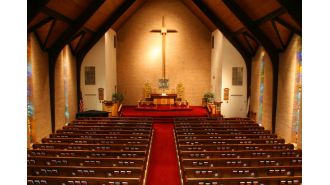This article was produced for ProPublica’s Local Reporting Network in partnership with the Idaho Statesman. Sign up for Dispatches to get stories like this one as soon as they are published.
Idaho Resolution Would Aim to Lower Voting Threshold to Pass School Bonds
No states mandate annual active shooter training for police officers, according to an analysis by ProPublica, The Texas Tribune and FRONTLINE. In comparison, at least 37 states require such training in schools, typically on a yearly basis.

For decades, school districts across Idaho have struggled to pass bonds to repair and replace their aging, crumbling buildings. A legislative proposal introduced Wednesday could change that by starting the process of lowering the vote threshold school districts need to pass a bond.
Idaho is one of only two states that require two-thirds of voters to support a bond for it to pass. Most states require either a majority or 60% of voters.
The resolution, introduced by Republican Rep. Rod Furniss, R-Rigby, would propose changing the Idaho Constitution to lower the threshold to 55% during years when statewide elections are held, such as presidential election years, when turnout is traditionally higher. The two-thirds threshold would remain in years with only local elections.
The resolution is intended to ease the requirements when more community members turn out to vote. Local elections often have low turnout while general elections have typically drawn 60% to 80% of registered voters, according to data from the Idaho secretary of state.
“What this does is this focuses on elections where we have higher participation rates. Hopefully, the idea is that we will know the will of the people from these votes,” Furniss told a legislative committee. “Fifty-five percent, that would increase our chances of funding these.”
Superintendents and school board members said the two-thirds threshold has been unachievable.
“It’s about time,” Mountain Home Superintendent James Gilbert told the Idaho Statesman and ProPublica. “It’s something that’s needed to be done for decades. That supermajority threshold is becoming virtually impossible to pass bonds on.”
The new resolution will need support from two-thirds of legislators in each chamber to place it on the general election ballot. It would then require approval from a majority of voters to change the state constitution.
The resolution is the second proposal to address the state’s school facilities funding crisis this legislative session, following a Statesman and ProPublica investigation that showed some students are learning in freezing classrooms, sometimes with leaking ceilings and damaged equipment after their districts failed to pass bonds.
This month, Idaho Republican leaders introduced a bill that would add $1.5 billion and redirect an additional $500 million over 10 years to help districts repair and replace their buildings. But some lawmakers and school district officials have raised concerns that the bill would not adequately address the needs of rural areas because it’s based on attendance, which favors larger urban districts.
That legislation followed a call from Gov. Brad Little during his State of the State address to make school facilities funding “priority No. 1” this legislative session. The House will soon vote on the proposal, House Bill 521, after a panel of lawmakers sent it to the floor last week.
Aside from distributing funds based on average daily attendance, the bill would also eliminate the August election as an option for school districts to run bonds and levies and lower the state’s income tax rate. Little celebrated the legislation as the largest investment in school facilities in state history.
Jason Knopp, an Idaho School Boards Association board member and Melba School District board chair, told the Statesman and ProPublica that the bill is a good first step but likely won’t be enough for districts like Melba to construct new schools without bonds. Melba would get about $3.1 million in a lump sum and additional money each year to help pay off its bonds and levies, according to estimates shared with the Statesman by the governor’s office on Feb. 20.
Superintendents have said this funding wouldn’t eliminate the need to pass bonds and levies, which can be big lifts for districts across the state.
Swan Valley School District Superintendent Michael Jacobson said he hopes to replace his school’s coal boiler, which requires constant maintenance and raises health concerns, with an electric boiler — a cost of nearly $1 million. If the funding bill passed as is, Swan Valley would receive about $200,000, according to the estimates.
He believes all districts should get a base amount, in addition to funds determined by attendance, to help level the playing field for rural districts, which make up a majority of Idaho’s school districts.
“The majority of the funding should not always go to the larger districts,” Jacobson said.
He said that he could see how lowering the threshold would be a win for other districts, but that it won’t make much of a difference in his community, given the lack of support for a bond.
Some superintendents have said they’ve given up on trying to pass bonds altogether. Others have run multiple bond elections but failed every time. Still others have come within a few votes of meeting the threshold.
Paired with a bill to lower the two-thirds threshold, the proposals could have a huge impact on school districts and communities, Knopp said. “That’s a great pairing coming together. We can lower the tax burden on the people who live in our school districts and also help make it easier for us to bond with less tax burden,” he said.
This article was produced for ProPublica’s Local Reporting Network in partnership with the Idaho Statesman. Sign up for Dispatches to get stories like this one as soon as they are published.
This article was produced for ProPublica’s Local Reporting Network in partnership with the Idaho Statesman. Sign up for Dispatches to get stories like this one as soon as they are published.







